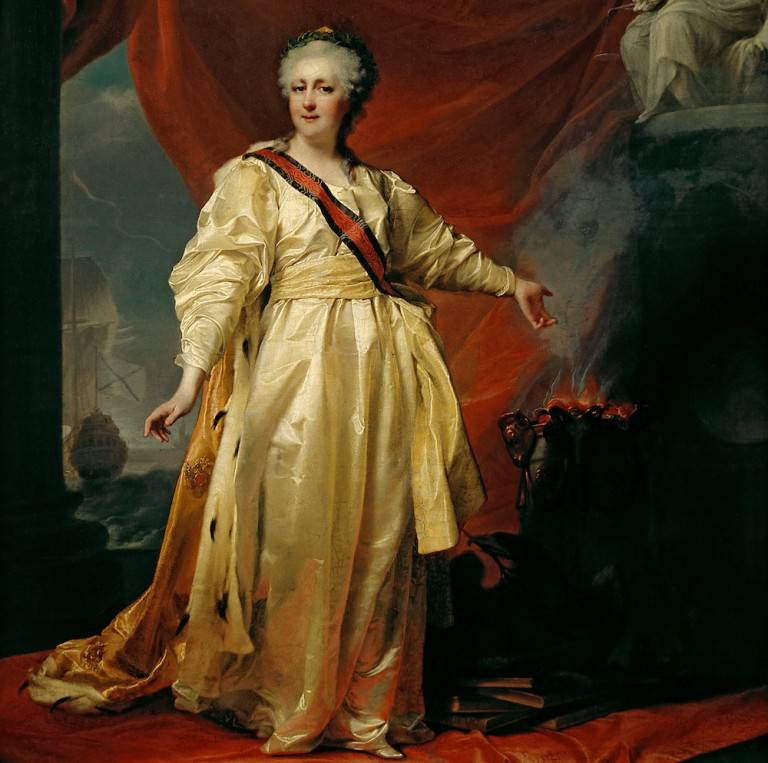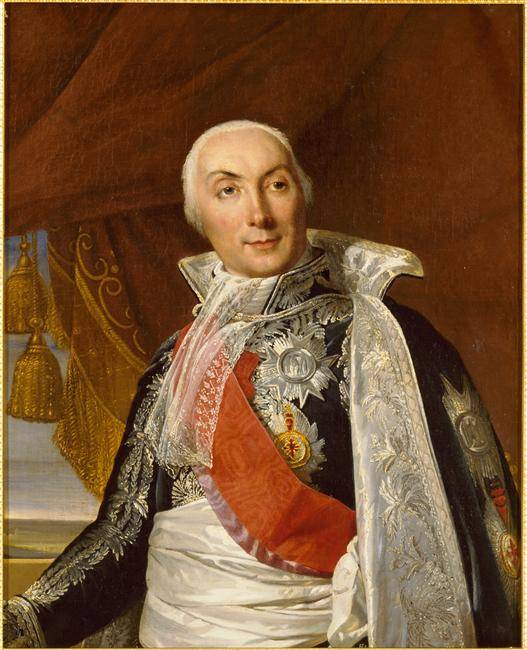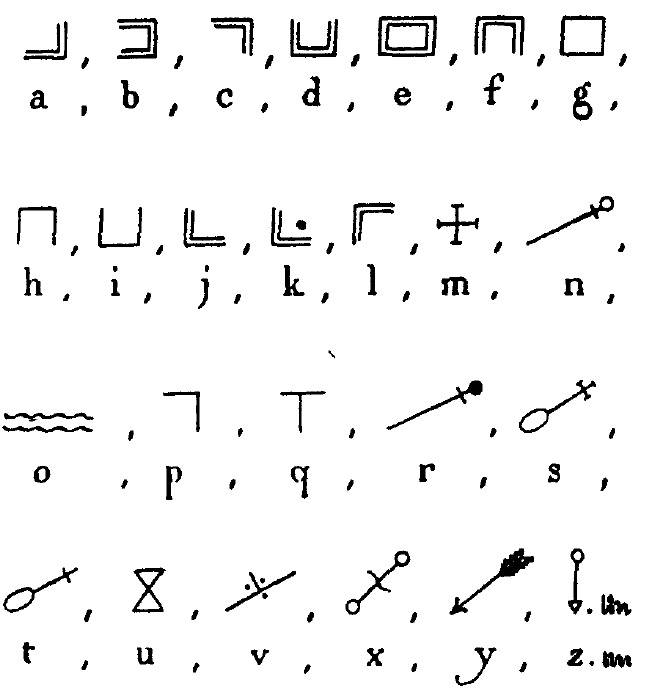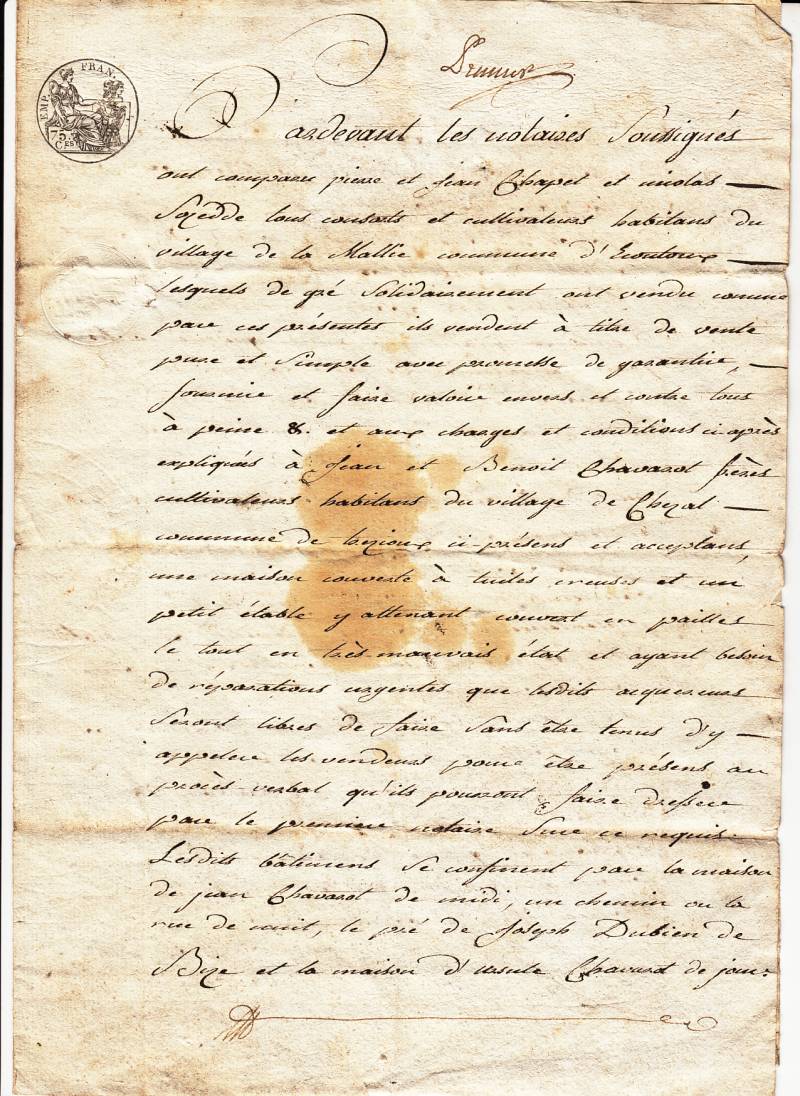"Black Cabinets" and their exposure. The evolution of censorship in Russia
Underrated art
In the previous part of the story about the first steps of Russian censorship the state adviser and outstanding decoder Christian Goldbach was mentioned, who became famous for the successful exposure of the Marquis de La Shetardi. This Frenchman was actually subversive in St. Petersburg, with the last words in his letters he watered Empress Elizabeth Petrovna and did everything to overthrow Alexei Petrovich Bestuzhev-Ryumin. It is noteworthy that when Shetardi was taken, charged and sent to shame in her homeland, in France they brought down all the fury for the failure of the operation on his secretary Depreux. Shetardi was accused of transferring ciphers to Russians precisely to this assistant - no one dared to think that in Russia they were capable of deciphering independently. And not only the French sinned with such arrogance. So, in the book “Notes on the Most Important Persons at the Russian Court”, which was written by the German diplomat Baron Axel von Mardededel in 1746, Goldbach is a little condescending.
His mathematical abilities are rightly appreciated, but the decryption skills, according to Mardedeleev, were rather modest. And with careful coding, Christian Goldbach will not be able to read diplomatic dispatches. At the same time, there was information in the archives about the decrypted correspondence as Mardedell himself, Baron Neuhaus and the French nobleman Lestock, who was trying to continue the “business” of Shetardi. It is not surprising that after such a cascade of revelations, foreign ambassadors were subsequently notified of the highest level of caution in conducting diplomatic correspondence. So, the French ambassadors of Louis XV to Russia, Douglas Mackenzie and Aeon de Beaumont arrived in the country with special codes, hidden in heels and a specific legend. They should have found the ground for the resumption of Franco-Russian relations, but presented themselves as fur traders, so as not to attract additional attention of the Russian "black offices". For this reason there were amusing conventions in the correspondence. So, Bestuzhev-Ryumin was recognized as a “lynx”, and the elevation of his authority in the retinue, of course, was encoded “lynx in price." But the English ambassador William Genbury was designated only as a "black-brown fox." In addition to such a thorough “encryption”, the French envoys were urged to enter into correspondence with the “center” only in extreme cases. Excessive caution in such a situation did not seem superfluous at all.

Until the end of the 18th century, Russian special services confidently and easily read the entire diplomatic correspondence of the French. Analysts cracked encryption, but many keys for cryptographs were obtained by operational methods. So, a recruited official from the French Foreign Ministry worked for the Russian embassy in Paris. He transmitted the source data for decryption to the secretary of the embassy Meshkov, then the information went to the official ambassador Smolin, and he already sent it to Russia. In fact, it was possible to send a secret message through diplomatic channels to Russia (from Russia) only in person or with a reliable messenger.
Censorship by Catherine II
After a short period of decline in the censorship service, Empress Catherine II breathed new life into the office. In 1764, she replaced Friedrich Asch as head of the service with Mr. Post-Director von Ekk, and Goldbach who prematurely left that same year, was replaced by Academician Franz Epinus. The staff of "black offices" has expanded significantly, and now all, without exception, foreign correspondence has been searched. In total, correspondence from thirty states had to be decoded and translated. Only in the 1771 year did the Prussian ambassador manage to write and receive messages through the 150 diplomatic channels, which, for fidelity, were encoded in different ways.
The "black cabinets" worked in such harsh conditions. There were times when Catherine II received letters on the decryption table before the recipients received them. The empress often gave instructions not only about the priority perusal of the correspondence of one or another ambassador, but also destroyed letters that were objectionable to her. Many outgoing letters to France, in which they talked about the alleged riots in the country, went straight to the oven. The empress’s attention did not pass by the important transit mail - it was also successfully decrypted. The famous historian V. S. Izmozik in the book "Black Cabinets" History Russian censorship ”gives an example of the interception and decryption by“ clerical servants ”of a letter to the pope from the ruler of the Persian city of Rasht. The geographical position of Russia greatly facilitated this transit interception of strategically important mail.
In addition to encrypted messages, Catherine II was pleased to read the private correspondence of foreign ambassadors with relatives abroad. In the memoirs of the diplomat Louis Philippe de Segur you can find such words of the empress:

At the end of the 18th century, the censorship service had a new function - the prevention of illegal export (import) of money with mail. Bank instructions in accordance with the instructions needed to be removed from envelopes and transferred in favor of the governorates on whose land the money was discovered.
From the middle of the 18th century, the first homegrown specialists for deciphering foreign correspondence began to appear in the censorship service. Erofei and Fyodor Karzhaviny who were trained in France became one of the first. Erofei arbitrarily left for Paris in the 1748 year and entered the Sorbonne straight away. It is worth knowing that Karzhavin was not a nobleman by origin - his father was engaged in petty trade in Moscow. At the university, Erofei learned languages and showed himself to be a talented student, who deserved the attention of the Minister d'Arjanson himself. Since 1760, Erofei has been living in Russia and works as a translator and cryptographer at the College of Foreign Affairs. In addition to public service, Karzhavin translates foreign literature. So, from his pen came the first Russian-language version of Gulliver's Travels. Fyodor Karzhavin, the nephew of Erofei, came to Paris to his uncle in the year 1753 and for thirteen years comprehended science. Later, he also returned to Russia and, like his uncle, served the country in the College of Foreign Affairs as a translator and cryptographer. The talented compatriot, in addition to total secret work, left behind a lot of literary works, historical and philosophical treatises.
Paradoxically, the names of Christian Goldbach, Franz Epinus, Yefim and Fyodor Krazhavins, with all their merits in the field of state security, are practically unknown to a wide circle of Russians. And meanwhile, it was they who left behind many students who later became the backbone of the Russian service of perusal and decryption.
Under the gun "Freemasons"
From the end of the 18th century, Catherine II, who had previously favored Freemasons in Russia, suddenly organized persecution of the order. This was primarily due to the revolution in France and the horrors with which it was accompanied. Tsarist people throughout Europe followed revolutionary events and slowly tightened their nuts in their own country. The Russian Empress was no exception. The search and transcript of correspondence has expanded significantly. All aristocrats who were even slightly noticed in opposition to the empress fell under observation. In addition, Catherine II read all the letters that her son Pavel, the freemason and future emperor, received and wrote. In this situation, “free masons” could not escape close attention, since it was their ideas that excited the society with excessive “democracy”. The memory of the bloody “Pugachevschina”, which almost cost Catherine II the throne, was still fresh. The empress rightly feared that Masonic lodges could be excellent venues for expanding the influence of the "enlightened West" on Russia.
The censorship has become an important tool of the state in the control of the freemasons in Russia. All post offices should pay particular attention to the letters of “free masons” and take at least two copies from each document. The historian Tatyana Soboleva in the book “The History of Encryption in Russia” mentions the Moscow post director Ivan Pestele (father of the Decembrist), who sent copies of the letters of the freemasons to two addresses: the Moscow commander-in-chief Prince Prozorovsky and the metropolitan count Bezborodko, who personally selected important letters for the empress. But copying a letter from a Freemason’s letter is a simple matter - it was much more difficult to decipher the content. The texts of the “free masons”, as is known, were distinguished by very intricate semantic encryption. Freemasons' hieroglyphs "most often denoted not just letters, but whole symbols and rites.

The higher the status of the recipient in the box, the more he is aware of the meaning of encryption. That is, not every follower of the order can read the Masonic cipher. And if he reads, then the meaning will be significantly different from the original. Only a deep knowledge of the rites and, most importantly, the symbolism of the order, allowed to understand the essence of the text. Count of Villegorsky, one of the largest masons of that period, said to his followers:
Such difficulties of perception of reality were waiting for decoders in the secret messages of Masons. For example, the sign of the compass open at sixty degrees (the symbol of the Masons) in the text could mean the sun, fire, Mercury, spirit, will, beauty and a host of other concepts.
No matter how difficult it is to decipher these texts, the censorship services did their job - according to the results of the search for correspondence, Catherine II put a lot of freemasons in prison. So, the publisher Novikov Nikolai Nikolaevich was imprisoned in Shlisselburg fortress in 1792, and his printing house was destroyed. One of the largest Freemasons in Russia was released only under Emperor Paul I. The lodges of the Martinists and Rosicrucians were dispersed and closed, whose publishing activity fronted the reign of Catherine II. Masons with the beginning of the repression, of course, understood where the state received information about the plans and intentions of the order. It is noteworthy that many masons' activists in letters to each other in plain text turned to Catherine II, trying to convince her of their innocence.
The censorship and decryption service in Russia in the 18th century proved to be effective and in just a few decades stood on a par with colleagues from abroad. In many ways, this became the foundation for the strategically important work of the special services during the Patriotic War of 1812.
Based on:
Soboleva T. History of encryption in Russia.
Tokareva N. N. On the history of cryptography in Russia.
Izmozik V. “Black Cabinets” History of Russian perusal. XVIII - the beginning of the XX century.

Information